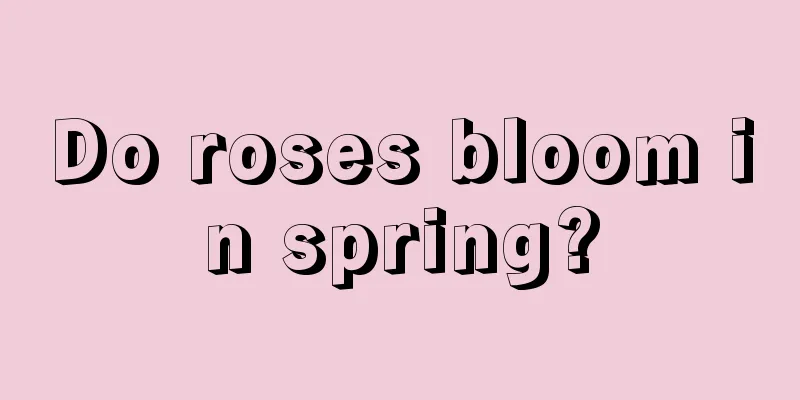What kind of soil is best for hibiscus? What kind of soil does hibiscus like?

|
Hibiscus can be planted in pots or in the ground. When planted in the ground, it can be planted directly in garden soil and grow into a flower tree. The shape of potted plants can be controlled by pruning, and the potting soil can be loose and fertile. Below we will specifically introduce what kind of soil is best for planting small hibiscus. What is the best soil for growing hibiscus?The soil conditions required for the growth of hibiscus are relatively wide. Whether it is poor soil or alkaline soil, hibiscus can tolerate it. However, hibiscus has certain requirements for soil. When planting, it is best to use loose , fertile soil with good air permeability and drainage , from which it can absorb a large amount of nutrients and grow faster. Generally , garden soil, sandy river soil, humus soil and perlite can be used . If you are planting potted hibiscus, the soil should be as loose and breathable as possible, and the drainage should be good. Especially when planted on the balcony, the ventilation is not so good, and the pot soil dries slowly. In this case, we can choose common peat soil, coarse coconut coir and perlite , mixed in a ratio of 5:3:2. You can mix a little decomposed sheep manure into the potting soil, or sprinkle some slow-release fertilizer on the soil surface. How to grow hibiscus flowersHibiscus is suitable for growing in a warm and humid environment, and has certain requirements for soil, light, temperature, water, nutrients, etc. Hibiscus is suitable for planting in places with sufficient light, but avoid direct sunlight. 18~25 degrees is the most suitable temperature for hibiscus. During the maintenance process, the soil should be kept moist, and waterlogging should be avoided. Nitrogen and phosphorus fertilizers should be used reasonably, and drugs should be sprayed to prevent diseases and insect pests. But don't place it in direct sunlight, scattered sunlight is more conducive to its growth. Especially in the hot summer, the temperature is too high and the light is too strong. We need to avoid it directly to prevent the hibiscus flower from drying up and dying due to rapid evaporation of water. |
Recommend
Why can Forsythia bloom out of season?
Off-season flowering of Forsythia Under normal ci...
How to make roses survive by cuttings
1. Choose the right time If you want to increase ...
The difference between bitter hemp and curly hemp
1. The difference between leaves The leaves of th...
How to plant garlic, cultivation method of autumn sowing garlic
1. Prepare the soil Planting garlic in autumn is ...
How to water Black Beauty
Black Beauty Watering Tips Black Beauty is relati...
When is the best time to harvest sweet potatoes?
Sweet potato harvest time Generally speaking, swe...
How to cultivate creeper
Temperature, light: Although Parthenocissus tricu...
How to prevent dahlia leaves from turning yellow and falling off
Pay attention to the choice of potting soil Dahli...
Things to note when planting oleander
Oleander is a common ornamental plant with bright...
Can mint be grown in the yard?
Can I grow mint in my yard? Mint can be planted i...
How to deal with Lithops after flowering
Treatment of Lithops after flowering Generally sp...
How to prune red cicada flowers after they bloom
Pruning after flowering After the red cicada bloo...
How to make the ball orchid bloom and what to do after it blooms
1. How to bloom 1. Appropriate light: Hoya is a s...
Can cacti be grown indoors?
Can cacti be grown indoors? Cactus can be planted...
Causes and solutions for curling bougainvillea leaves
Bougainvillea , with its colorful flowers and uni...









